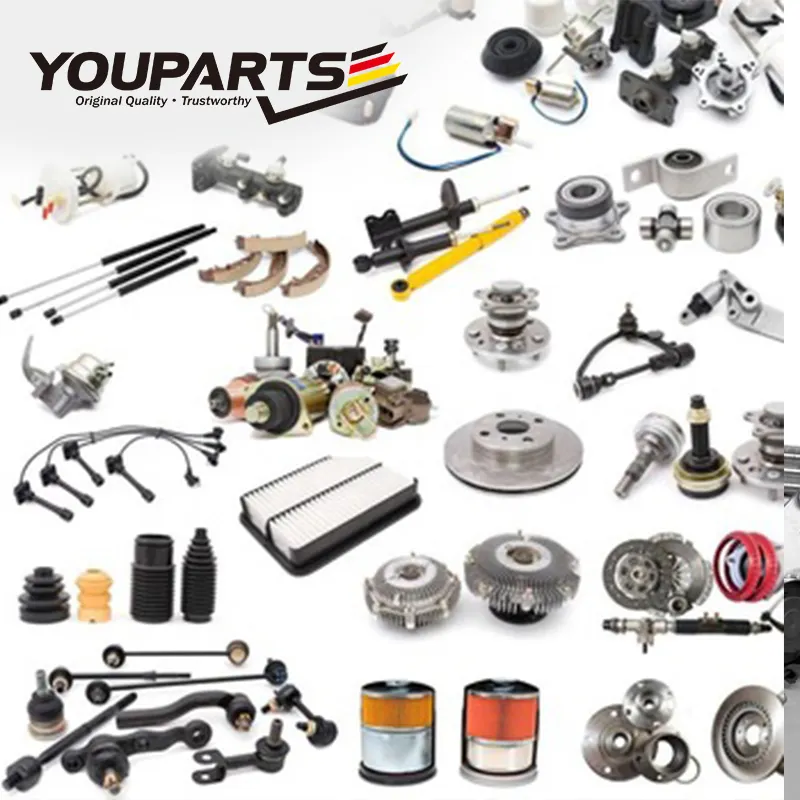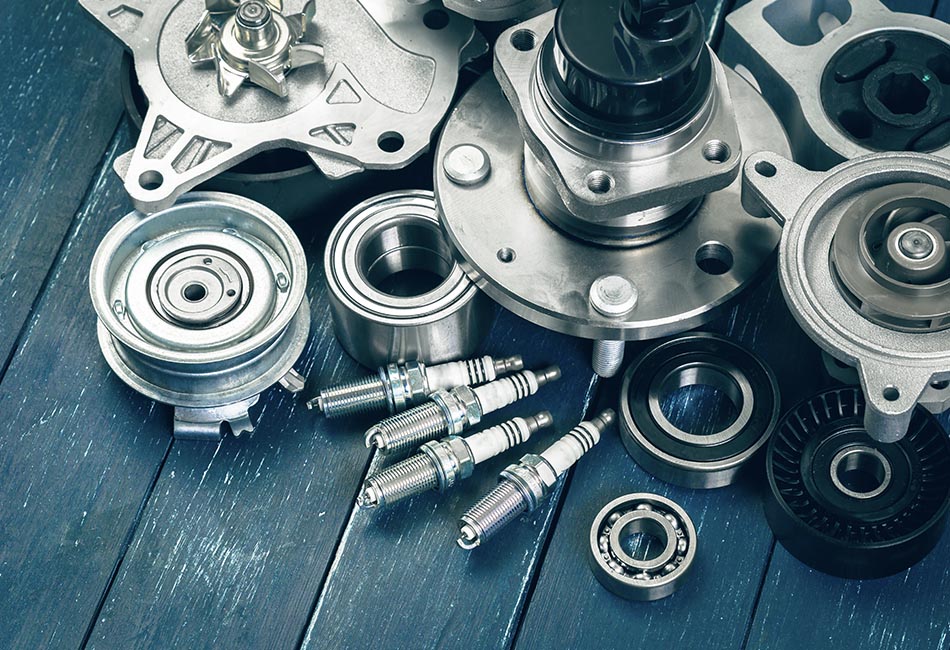20 New Ideas For Choosing Car Parts
20 New Ideas For Choosing Car Parts
Blog Article
Top 10 Things To Think About About Quality And Source Of Auto Parts
These tips can help you make an informed decision regarding the origin and quality of your vehicle parts.
1. Choose OEM vs. Aftermarket
If you are unsure, decide whether to buy OEM (Original Equipment Manufacture) or aftermarket replacement parts.
Pros:
OEM parts will ensure perfect performance and fit.
The cost of quality parts aftermarket is reasonably priced.
Cons:
OEM parts are often more expensive.
Certain aftermarket parts aren't as durable as OEM components.
2. Verify certifications and standards
Tip Try to find items that have been approved by SAE or ISO.
Cons: Doesn't ensure safety or performance compliance.
Cons: Some components are more costly or harder to obtain for older cars.
3. Find out about the Reputation and Quality of a Manufacturing Company
Tips: Opt for well-known and reliable brands that have a solid track history.
Pros: Reduces the risk of faulty parts failing in a hurry.
Cons: copyright products can be found in reputable brands. This is a matter that requires extra care.
4. Purchase from dependable Retailers
Tip: Buy your items from dealers who are authorized or reliable online platforms.
Positives: Retail stores that are reliable usually offer guarantees and verified the quality of their products.
Cons: Prices could be more expensive than other third-party suppliers.
5. Examine the build and material quality
Tip: Check for durable materials, corrosion resistance and proper construction.
Pros: It ensures safety and a long-lasting performance.
Pros: It may not be possible to examine the parts purchased online prior to purchasing.
6. Consider Refurbished Parts
Refurbished parts are ideal for high-priced components such as engines or transmissions.
Pros: Sourced from reputable suppliers, it is cost-effective and does not compromise quality.
Cons: Quality can vary based on the refurbishing process.
7. Avoid copyright goods
Examine the part numbers, packaging, labels and packaging for counterfeits.
Pros: It protects you from the use of substandard components.
Cons: It takes the right knowledge and expertise to identify counterfeits.
8. Verify Warranty
Tip Prioritize parts covered by a warrantee in order to ensure that there are no defects or failures.
Pros Offers peace-of-mind and financial protection.
Cons: Providing warranty claims is time-consuming.
9. Read customer reviews and ratings
Look online for reviews to get an idea of the product's quality in terms of durability, fit, and quality.
Pros Helps to identify the difference between quality and reliability of products.
Cons: Some reviews may be biased or not reliable.
10. Learn about regional differences in quality
Be aware that different regions may produce parts of varying quality (e.g. replica factories as compared to. original factories).
Pros: The finest quality is available for the market.
Pros: Imports from high-quality products may be more costly or may take longer to arrive.
Final Thoughts on Weighting Both Pros and Con
Pros:
Good quality parts guarantee security, reliability, and high performance.
Reputable sources reduce risks like defective parts or warranty issues.
Cons:
High-quality parts can be more expensive up front.
It requires extra time and effort to confirm authenticity and quality.
By considering both quality and the source of the vehicle, you can make intelligent purchases that will ensure vehicle performance and long-term value. Have a look at the top rated gaisa kondicionešana car parts par wiesmann cars for website info including bmw bits, parts auto parts, gadi ke parts, auto par5s near me, exclusive auto spares, auto parts c, aj auto parts, l auto salvage, auto salvage locations, auto parts latvia and more.
Consider These 10 Points In Evaluating The Special Considerations For Advanced Systems
When buying replacement parts, it is important to consider the latest systems in cars such as sensors, electronic components and technological elements. These systems are often different from mechanical parts in that they have specific needs. Here are 10 important suggestions with pros and cons that you should consider:
1. Know the System Complexity
Tip: Research the complexity of the sophisticated system (e.g. infotainment and adaptive cruise control or collision avoidance systems) before purchasing components.
The benefits: Being aware of the specifications helps you avoid buying incompatible components.
Cons: Complex systems may be difficult to understand and require expert understanding. This can lead to increased costs for repair or replacement.
2. Verify compatibility with Vehicle Software
Make sure that the part you are using is compatible (e.g. firmware or ECU) with the software in the vehicle. Certain parts may require a software update or calibration.
Cons This system isn't compatible with other systems.
Cons: Software issues can be costly and complicated particularly in the event of updates.
3. Advanced Systems: Consider OEM vs. aftermarket
Tip - For high-tech parts, OEMs (Original Equipment Manufacturers) are typically needed to ensure full functionality. However, aftermarket components may not have certain features.
OEM parts guarantee compatibility and system integrity.
Cons: OEM parts may cost more than alternative aftermarket products.
4. Check for Integrated Systems or Modular Systems
TIP: Most advanced systems are multi-component, which means that they need to be utilized in conjunction. Purchase all the components required to make the system function properly.
Advantages: Modular systems are able to be simpler to maintain or upgrade.
Cons: Not understanding the modularity may lead to insufficient repairs or increased cost for additional parts.
5. Evaluation of the impact on Vehicle Warranty
Tips: Make sure you know if replacing a part in an advanced system affects your warranty on your vehicle, specifically for electronic components.
Benefits: Your warranty will be guaranteed if you are able to replace the item in a timely manner.
Cons: Some components may invalidate warranties if they are replaced incorrectly or if parts that are not approved by the manufacturer are employed.
6. Take into consideration the need for calibration or reprogramming
Tip: After installation of advanced components, such as sensors, cameras or ECUs, they could require calibration or programming. Be sure to have the proper tools and knowledge to complete this.
Benefits: A proper calibration will assure that the system is operating properly.
Cons: Calibration takes time and costly, and could require special equipment or expertise.
7. Verify the Part's Compliance with the Regulations
Tip: If you are making use of advanced systems dealing with emissions, safety or driver assist technology, make sure the parts comply with industry standards and regulations (e.g. CARB compliance).
Pros: It ensures compliance with the law and safety.
Cons: Regulatory-compliant components may be more costly and harder to obtain.
8. Prioritize Brands with Expertise in Advanced Technology
Tips: Select components from companies that are that are known for their expertise in automobile technology, especially for systems that are complex, such as active safety features or infotainment.
Pros: Top-quality components and systems are offered by skilled manufacturers.
Pros: Generic products could be less expensive than reputable brands.
9. Be sure to check for updates to your system or recalls
Conduct some research to find out if there's any recalls or updates for the advanced system parts you are planning to purchase. Updates are sometimes issued by car makers to boost performance.
Pros: Ensures you're buying the most recent version of the component, and avoiding faulty components.
Cons: Recalls of updates or recalls may complicate the purchase process.
10. Incorporate integration with other components of the vehicle
Tips. Some of the most advanced systems can be connected to other parts of the vehicle like lighting, HVAC and powertrain. Check that the part you select is compatible with the entire vehicle system.
Pros An integrated system will ensure smooth performance and prevents problems in the future.
Cons: Integrating several systems can make installation more difficult and troubleshooting.
Final Thoughts on Weighing Pros & Cons
Advantages of considering Special considerations for Advanced Systems
Seamless Performance - Assures that the advanced system is operating correctly and is integrating properly with the vehicle.
Safety and compliance: Maintaining regulatory compliance and cutting down on safety risks.
Long-term value: If properly calibrated and installed, the sophisticated systems in the vehicle will maintain their quality and function.
Cons of not taking special Considerations into Account:
Higher upfront costs Because of their complex nature branding, image, or the regulatory requirements, the most advanced components are usually more costly.
Complex Installation Maintenance and Installation of these systems may require specialist knowledge, special tools or assistance from a professional.
Potential for System Failures: The wrong choice of or installation of components could cause system malfunctions which could result in costly repairs or safety risks.
You can balance the cost, compatibility and functionality of your modern car systems by taking into consideration these considerations. Take a look at the most popular transmisijas ella parts for hafei cars for website recommendations including x auto parts, c auto parts, spare parts by vin, auto parts as, aur parts, volvo detalas, auto part in, xpart, auto parts auto parts near me, auto parts by vin number and more.